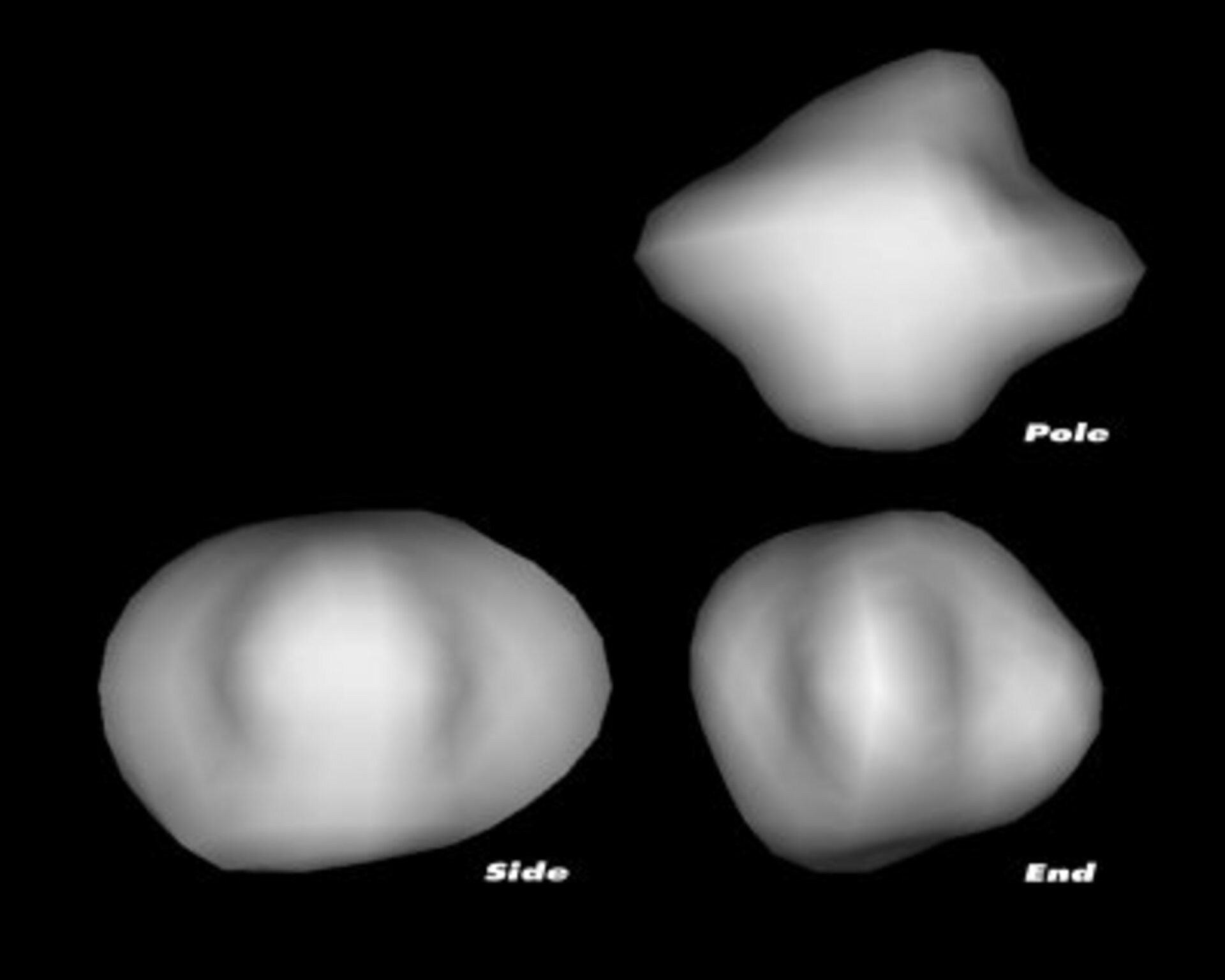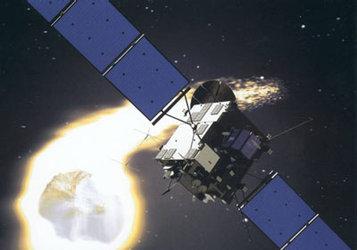Hubble assists Rosetta comet mission
ESA PR 55-2003. Results from the NASA/ESA Hubble Space Telescope have played a major role in preparing ESA’s ambitious Rosetta mission for its new target, comet 67P/Churyumov-Gerasimenko.
Hubble has been used to make precise measurements of the size, shape and rotational period of the comet. Information that is essential if Rosetta is to rendezvous with the comet and then drop down a probe, something never before attempted and yet a major step towards elucidating the origins of the solar system.
Observations made by Hubble in March this year revealed that comet 67P/Churyumov-Gerasimenko (67P/C-G) is approximately five by three kilometres in size and shaped like a rugby ball. ESA mission scientists were concerned about the exact size of the solid nucleus, which is needed to adapt the mission to the comet’s gravity.
"Although 67P/C-G is roughly three times larger than the original Rosetta target, its highly elongated shape should make landing on its nucleus feasible, now that measures are in place to adapt the lander package to the new scenario," says Dr Philippe Lamy of the Laboratoire d'Astronomie Spatiale in France, who is presenting the Hubble results on comet 67P/C-G today at the annual meeting of the Division for Planetary Sciences of the American Astronomical Society in California, USA.
Mission scientists began looking for an alternative target when the Rosetta mission's launch date was postponed. The delay meant that the original target comet, 46P/Wirtanen, was no longer easily reachable. But scientists did not have enough information on the back-up comet, 67P/C-G, and sought data from the largest telescopes.
Using a technique developed over the past decade by Philippe Lamy, Imre Toth (Konkoly Observatory, Hungary), and Harold Weaver (Johns Hopkins University Applied Physics Laboratory, Laurel, USA), the team snapped 61 Hubble images of comet 67P/C-G over a period of 21 hours on 11 and 12 March. Hubble's Wide Field Planetary Camera 2 isolated the comet's nucleus from the coma, the diffuse gas surrounding the nucleus, quickly providing the figures required. The telescope showed that the nucleus is ellipsoidal and measured its rotation rate at approximately 12 hours.
Rosetta's launch is currently planned for February 2004, with a rendezvous with the comet about 10 years later.
Notes for editors
The team is made up of P. L. Lamy and L. Jorda (Laboratoire d'Astronomie Spatiale, France), I. Toth (Konkoly Observatory, Hungary), and H.A. Weaver (Johns Hopkins University Applied Physics Laboratory). The movie simulation of the Hubble results is provided by Mikko Kaasalainen (University of Helsinki, Finland) and Pedro Gutierrez (Laboratoire d'Astronomie Spatiale, France).
The observations were made possible through a special programme approved by the Director of the Space Telescope Science Institute, S. Beckwith.
For more information, please contact:
Philippe Lamy
Laboratoire d'Astronomie Spatiale, France
Cellular: +33-630-14-92-33
E-mail: lamy@astrsp-mrs.fr
Lars Lindberg Christensen
Hubble European Space Agency Information Centre, Garching, Germany
Tel: +49-89-3200-6306 (089 within Germany)
Cellular (24 hr): +49-173-3872-621 (0173 within Germany)
E-mail: lars@eso.org
Ray Villard
Space Telescope Science Institute, Baltimore, MD, USA
Tel: +1-410-338-4514)
E-mail: villard@stsci.edu
Michael Buckley
Johns Hopkins University Applied Physics Laboratory, Laurel, MD, USA
Tel: +1-443-778-7536
E-mail: michael.buckley@jhuapl.edu















 Germany
Germany
 Austria
Austria
 Belgium
Belgium
 Denmark
Denmark
 Spain
Spain
 Estonia
Estonia
 Finland
Finland
 France
France
 Greece
Greece
 Hungary
Hungary
 Ireland
Ireland
 Italy
Italy
 Luxembourg
Luxembourg
 Norway
Norway
 The Netherlands
The Netherlands
 Poland
Poland
 Portugal
Portugal
 Czechia
Czechia
 Romania
Romania
 United Kingdom
United Kingdom
 Slovenia
Slovenia
 Sweden
Sweden
 Switzerland
Switzerland




























